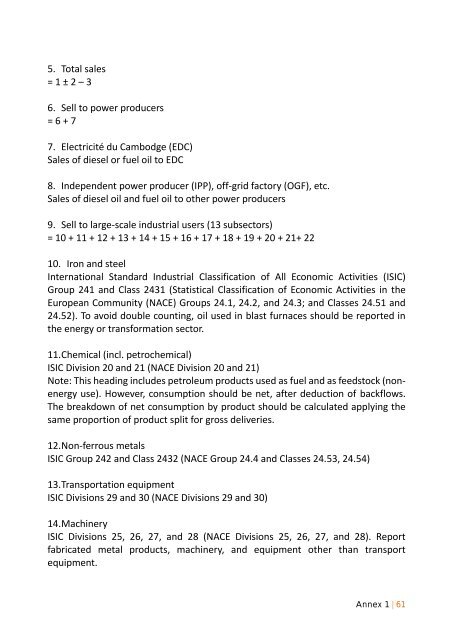RPR_FY2015_08
Create successful ePaper yourself
Turn your PDF publications into a flip-book with our unique Google optimized e-Paper software.
By 2015, the electricity consumption of the final sectors increased to 5,201<br />
GWh at an average rate of 18.2 percent per year. The service sector’s consumption<br />
increased at a faster rate of 23.2 percent per year as more hotels, hospitals, schools,<br />
and other commercial buildings were being constructed. The industry sector’s<br />
electricity consumption increased at an annual average rate 18.3 percent per year<br />
while that of the residential and other sectors increased at 11.9 percent per year.<br />
The consumption share of the final sectors to total consumption of electricity<br />
decreased to 96 percent in 2015 because the own use share increased to 4 percent<br />
(Figure 3.12). Since consumption in the service sector increased faster than in the<br />
industry and residential sectors, the share of the service sector to total electricity<br />
consumption increased to 49 percent, respectively, while the industry sector’s<br />
share declined to 22 percent and the residential and other sectors’ share, to 29<br />
percent.<br />
6,000<br />
Figure 3.12. Electricity Consumption<br />
5,398<br />
GWh<br />
5,000<br />
4,000<br />
3,000<br />
2,000<br />
1,000<br />
0<br />
2,605<br />
2,283<br />
854<br />
869<br />
1,<strong>08</strong>2<br />
893<br />
490 630<br />
3,620<br />
3,314<br />
1,187<br />
1,079<br />
1,276 1,539<br />
900 820<br />
4,244<br />
127<br />
1,323<br />
1,639<br />
1,054<br />
1,527<br />
2,530<br />
1,137<br />
Other<br />
Residential<br />
Service<br />
Industry<br />
Estimated<br />
Own Use<br />
Electricity<br />
Consumption<br />
GWh = gigawatt-hour.<br />
Source: Electricity Authority of Cambodia.<br />
The distribution losses compared to total consumption was projected to<br />
increase during 2010–2015. The losses in term of percentage would increase from<br />
around 10 percent to almost 14 percent.<br />
3.5 Energy Indicators<br />
Energy consumption is the result of human activities. Therefore, analysing the links<br />
between such human activities and energy consumption makes sense. These<br />
activities are (i) producing primary and secondary products, (ii) transporting persons<br />
Chapter 3 • Analysis of Energy Demand Supply Situation | 47



